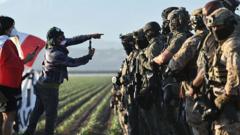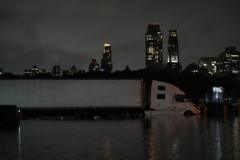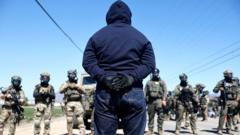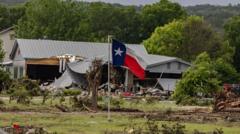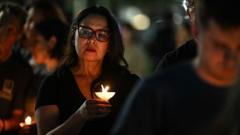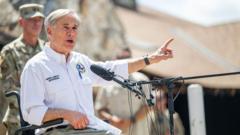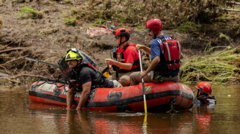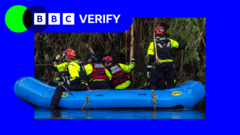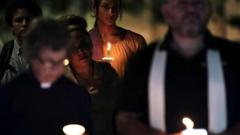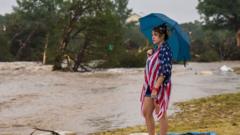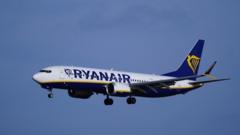A significant arctic outbreak is forecasted to complicate Thanksgiving travel as millions take to the skies and roads.
**Arctic Weather Advisory Looms Over Thanksgiving Holiday Travel in the US**
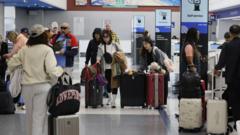
**Arctic Weather Advisory Looms Over Thanksgiving Holiday Travel in the US**
Severe cold front and snowfall threaten holiday travel plans for millions across the nation.
The eastern United States may face harsh weather conditions as millions prepare for Thanksgiving travel. According to the National Weather Service (NWS), a substantial arctic front is set to impact the northern Plains during one of the busiest travel seasons of the year. The forecast predicts heavy snow in the Colorado Rockies on Wednesday, with the storm system expected to intensify and shift eastward on Thanksgiving Day.
Areas in the northern Plains and Upper Midwest could feel extreme cold, with temperatures plunging to as low as -30°F to -40°F (-34°C to -40°C), as reported by BBC Weather's Matt Taylor. In addition to the bitter cold, snow accumulation could exceed 10 inches (25 cm) in some regions, with the NWS highlighting potential heavy snow events in New England and the Appalachians, alongside significant snowfall along the northern Michigan coastline.
The predicted severe weather coincides with peak travel days. The Transportation Security Administration (TSA) has indicated record-breaking passenger volumes this Thanksgiving, with nearly nine million travelers expected to pass through airports on the busiest days—Tuesday, Wednesday, and the Sunday following the holiday. AAA anticipates that about 72 million Americans will travel at least 50 miles (80 km) via car, buoyed by lower petrol prices compared to the previous year.
So far, air travel disruptions have been minimal; however, the impending weather could hinder plans for many. Specific travel challenges are anticipated on key highways, including the I-90 between Cleveland and Buffalo and I-81 north of Syracuse, where heavy snowfall is likely.
On the west coast, a winter storm impacted California earlier in the week, delivering substantial snowfall at higher elevations and wind gusts reaching 50 mph (81 km/h), as reported by weather authorities. Central California was also affected by another "atmospheric river" event. Additionally, communities in the Pacific Northwest are still reeling from the impacts of a previous bomb cyclone, which caused significant flooding and power outages; they may face further rain as a low-pressure system is forecasted to linger.
As Americans look forward to Thanksgiving gatherings, the looming weather hazards underscore the challenges of safe travel amidst harsh winter conditions.
Areas in the northern Plains and Upper Midwest could feel extreme cold, with temperatures plunging to as low as -30°F to -40°F (-34°C to -40°C), as reported by BBC Weather's Matt Taylor. In addition to the bitter cold, snow accumulation could exceed 10 inches (25 cm) in some regions, with the NWS highlighting potential heavy snow events in New England and the Appalachians, alongside significant snowfall along the northern Michigan coastline.
The predicted severe weather coincides with peak travel days. The Transportation Security Administration (TSA) has indicated record-breaking passenger volumes this Thanksgiving, with nearly nine million travelers expected to pass through airports on the busiest days—Tuesday, Wednesday, and the Sunday following the holiday. AAA anticipates that about 72 million Americans will travel at least 50 miles (80 km) via car, buoyed by lower petrol prices compared to the previous year.
So far, air travel disruptions have been minimal; however, the impending weather could hinder plans for many. Specific travel challenges are anticipated on key highways, including the I-90 between Cleveland and Buffalo and I-81 north of Syracuse, where heavy snowfall is likely.
On the west coast, a winter storm impacted California earlier in the week, delivering substantial snowfall at higher elevations and wind gusts reaching 50 mph (81 km/h), as reported by weather authorities. Central California was also affected by another "atmospheric river" event. Additionally, communities in the Pacific Northwest are still reeling from the impacts of a previous bomb cyclone, which caused significant flooding and power outages; they may face further rain as a low-pressure system is forecasted to linger.
As Americans look forward to Thanksgiving gatherings, the looming weather hazards underscore the challenges of safe travel amidst harsh winter conditions.

